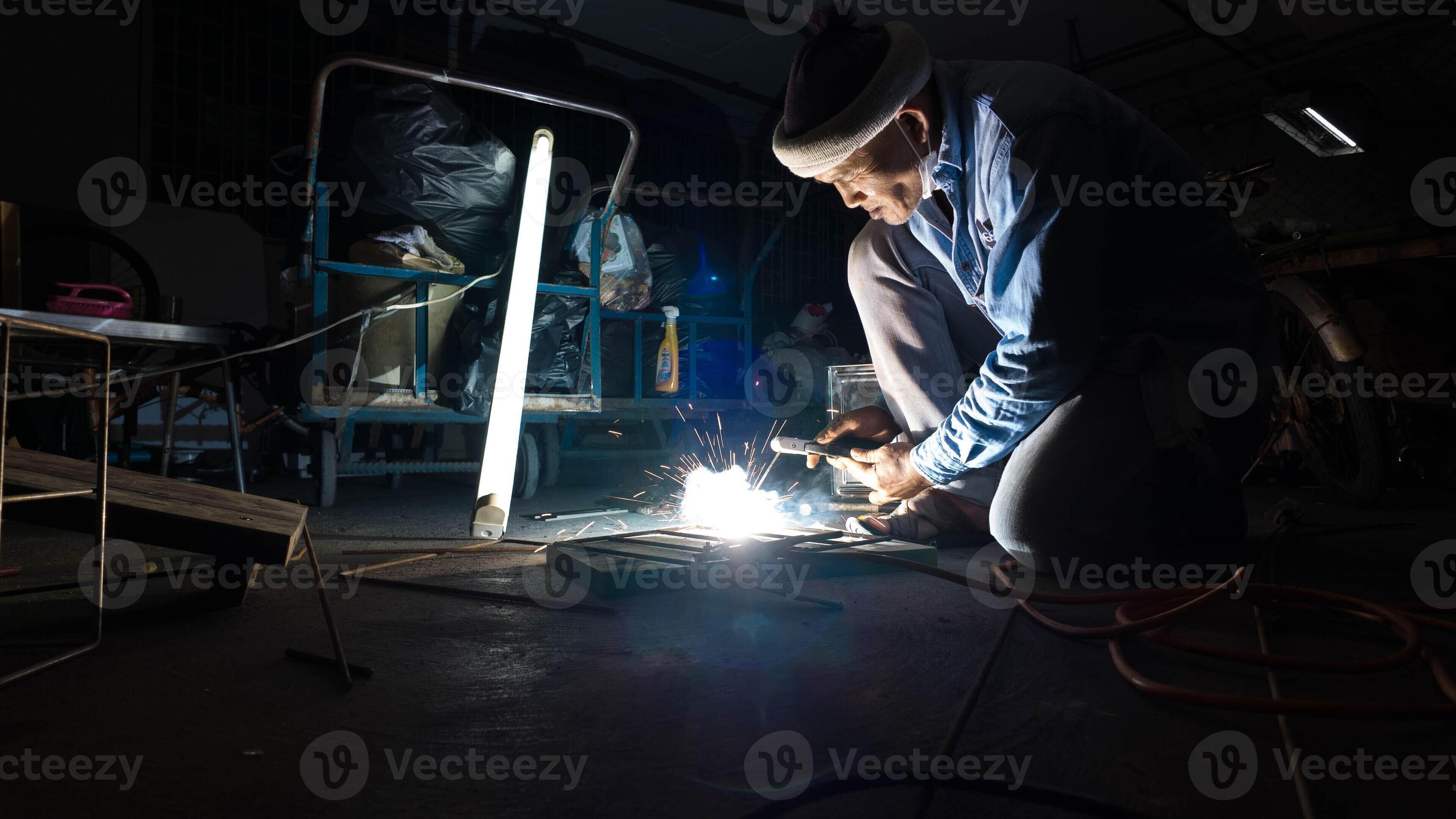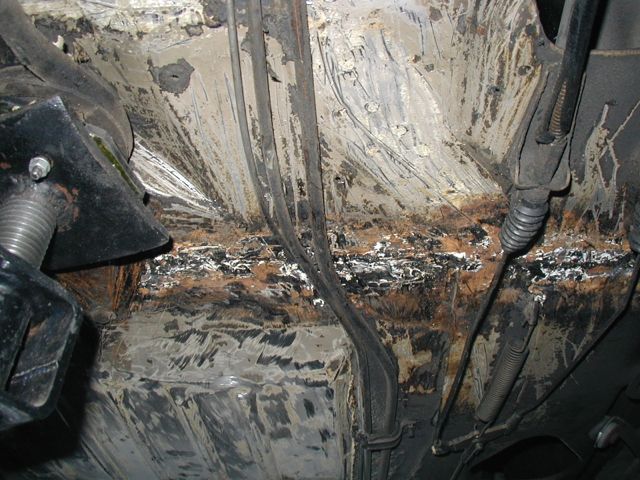Steps to success for poor fusion from Montana Mobile Welding and Repair
Everything about Welding: Secret Insights Into Techniques and Ideal Practices for Success
Welding encompasses a selection of techniques, each matched for certain materials and applications. Recognizing these techniques, such as GMAW, SMAW, and TIG, is vital for achieving optimal results. The appropriate equipment and security methods can not be forgotten. As prep work and fixing play crucial functions in the welding process, grasping these components can significantly enhance the top quality of the end product. What are the crucial aspects that guarantee a successful weld?
Recognizing Various Welding Methods
Welding methods incorporate a range of approaches, each matched to details applications and products. Among one of the most typical techniques are Gas Steel Arc Welding (GMAW), Shielded Metal Arc Welding (SMAW), and Tungsten Inert Gas Welding (TIG) GMAW, additionally recognized as MIG welding, is prominent for its rate and convenience, making it optimal for slim materials. SMAW, or stick welding, is favored for its simpleness and effectiveness in outside settings, especially with thicker metals. TIG welding offers precision and control, making it ideal for elaborate work and non-ferrous steels (Welding). Each strategy has its one-of-a-kind advantages and considerations, allowing welders to choose the finest approach based upon the job's requirements, product type, and desired results. Recognizing these methods is necessary for effective welding
Necessary Welding Devices and Devices
While various welding methods need specific skills, the appropriate devices and devices are similarly important for attaining quality outcomes. Necessary welding tools consists of welding machines, which vary depending upon the technique-- such as MIG, TIG, or stick welding. Safety equipment, consisting of aprons, gloves, and headgears, warranties security and comfort during the procedure. In addition, clamps and components help safeguard materials in position, ensuring precision in welds. Consumables like welding rods, cord, and securing gas are also vital components that influence the high quality of the weld. Additionally, tools such as mills and cutters assist in surface area preparation and post-weld ending up, adding to a professional end result. Buying top quality equipment eventually enhances the performance and performance of welding jobs.
Security Practices in Welding
Appropriate safety and security practices are crucial in the welding market to shield employees from prospective hazards. Welders should use proper individual safety devices (PPE), including safety helmets with appropriate shading, handwear covers, and flame-resistant clothing. Ample air flow is essential to reduce exposure to hazardous fumes and gases generated throughout the welding process. Furthermore, employees ought to be trained in the correct handling of welding equipment to avoid mishaps. Fire precaution, such as keeping flammable materials far from the welding area and having fire extinguishers easily available, are necessary. Normal inspections of devices and offices can aid determine prospective hazards before they result in crashes. By sticking to these safety techniques, welders can develop a much safer working atmosphere and reduce dangers related to their profession.
Readying Materials for Welding
Preparing materials for welding is an essential action that substantially affects the top quality and integrity of the end product (Belgrade Fabrication). Appropriate prep work includes cleaning up the surfaces to remove contaminants such as oil, dust, and rust, which can jeopardize the weld. Methods such as grinding, sanding, or utilizing solvents are typically employed to attain a tidy surface. In addition, making certain that the materials fit with each other snugly is vital; gaps can cause weak welds. It's also important to consider the positioning and positioning of the elements, as this will affect the ease of welding and the last outcome. Choosing the suitable filler product and making sure compatibility with the base metals is important for attaining strong, sturdy welds.
Tips for Getting High-Quality Welds
Achieving high-quality welds needs attention to detail and adherence to finest techniques throughout the welding procedure. Correct joint preparation is essential, guaranteeing surfaces are tidy and totally free from contaminants. Selecting the appropriate filler material and welding strategy based upon the base metals is essential for excellent bonding. Keeping constant travel speed and angle while welding can protect against problems and promote harmony. In addition, managing warm input is necessary; excessive warmth can result in warping and damaged joints. If essential, frequently examining the welds throughout the procedure permits for immediate adjustments. Lastly, using proper post-weld therapies, such as cleaning and stress and anxiety relief, can improve the durability and honesty of the weld, inevitably guaranteeing a successful result.
Troubleshooting Common Welding Issues
Welding commonly presents difficulties that can influence the quality and stability of the end product. Typical issues such as porosity, irregular weld grains, and getting too hot can occur, each calling for certain fixing methods. Recognizing these troubles is necessary for welders to enhance their skills and achieve ideal results.
Porosity Issues Explained
Porosity can usually be forgotten, it remains an essential problem in welding that can endanger the integrity of an ended up product. Porosity describes the presence of tiny gas pockets within the weld grain, which can lead and compromise the joint to premature failure. This problem normally occurs from impurities, moisture, or incorrect protecting gas protection during the welding procedure. To reduce porosity, welders need to verify that the base materials are dry and clean, make use of ideal protecting gases, and preserve regular welding parameters. Frequently checking the tools and environment can also help identify possible problems before they materialize in the weld. Addressing porosity effectively is essential for accomplishing solid, sturdy welds that fulfill quality criteria.

Inconsistent Weld Beads
Inconsistent weld grains can substantially impact the top quality and stamina of a finished product. Different website aspects add to this concern, consisting of improper traveling speed, wrong amperage setups, and irregular electrode angles. When the welder relocates as well swiftly, a grain may show up slim and lack penetration, while relocating too gradually can trigger extreme accumulation. Furthermore, using the wrong amperage can result in either damaging or extreme spatter, both of which compromise weld honesty. The welder's strategy, such as inconsistent torch motion, can additionally bring about irregular grain appearance. To reduce these troubles, welders need to concentrate on preserving consistent, controlled movements and ensuring proper equipment settings to attain uniformity in their welds. Consistency is essential to accomplishing reputable and solid welds.
Getting Too Hot and Warping Issues
Too much warmth throughout the welding process can result in significant overheating and warping problems, impacting the architectural honesty of the workpiece. These troubles usually manifest as distortion, which can jeopardize placement and fit-up, making additional assembly challenging. Factors adding to overheating include the selection of welding parameters, such as voltage and take a trip speed, along with the kind of material being bonded. To mitigate these concerns, welders ought to keep consistent travel speed and appropriate warmth input while keeping an eye on the workpiece temperature level. In addition, pre-heating or post-weld heat treatment can help reduce tensions triggered by fast cooling - Welding. Routine inspection and adherence to best techniques are essential in avoiding overheating and ensuring the longevity and dependability of bonded frameworks
Often Asked Inquiries
What Are the Occupation Opportunities in the Welding Market?
The welding industry provides diverse career opportunities, including placements as welders, designers, examiners, and instructors. Specialists can work in production, building, aerospace, and automobile markets, taking advantage of strong need and affordable incomes in numerous duties.
How Can I Enhance My Welding Speed Without Compromising High Quality?
To enhance welding rate without giving up high quality, one ought to practice efficient techniques, preserve equipment, maximize settings, and boost hand-eye control. Routine training and looking for responses can also significantly add to attaining much faster, top quality welds.
What Certifications Are Readily Available for Welders?
Many certifications exist for welders, including those from the American Welding Culture (AWS), the National Center for Building And Construction Education And Learning and Study (NCCER), and different industry-specific organizations. These credentials improve employability and show ability efficiency.
Just How Does Welding Influence the Residences of Metals?
Welding affects the buildings of steels by modifying their microstructure, which can result in adjustments in solidity, ductility, and strength. Heat input and air conditioning prices during the process considerably impact these product characteristics.
Can I Weld Dissimilar Metals Together?
